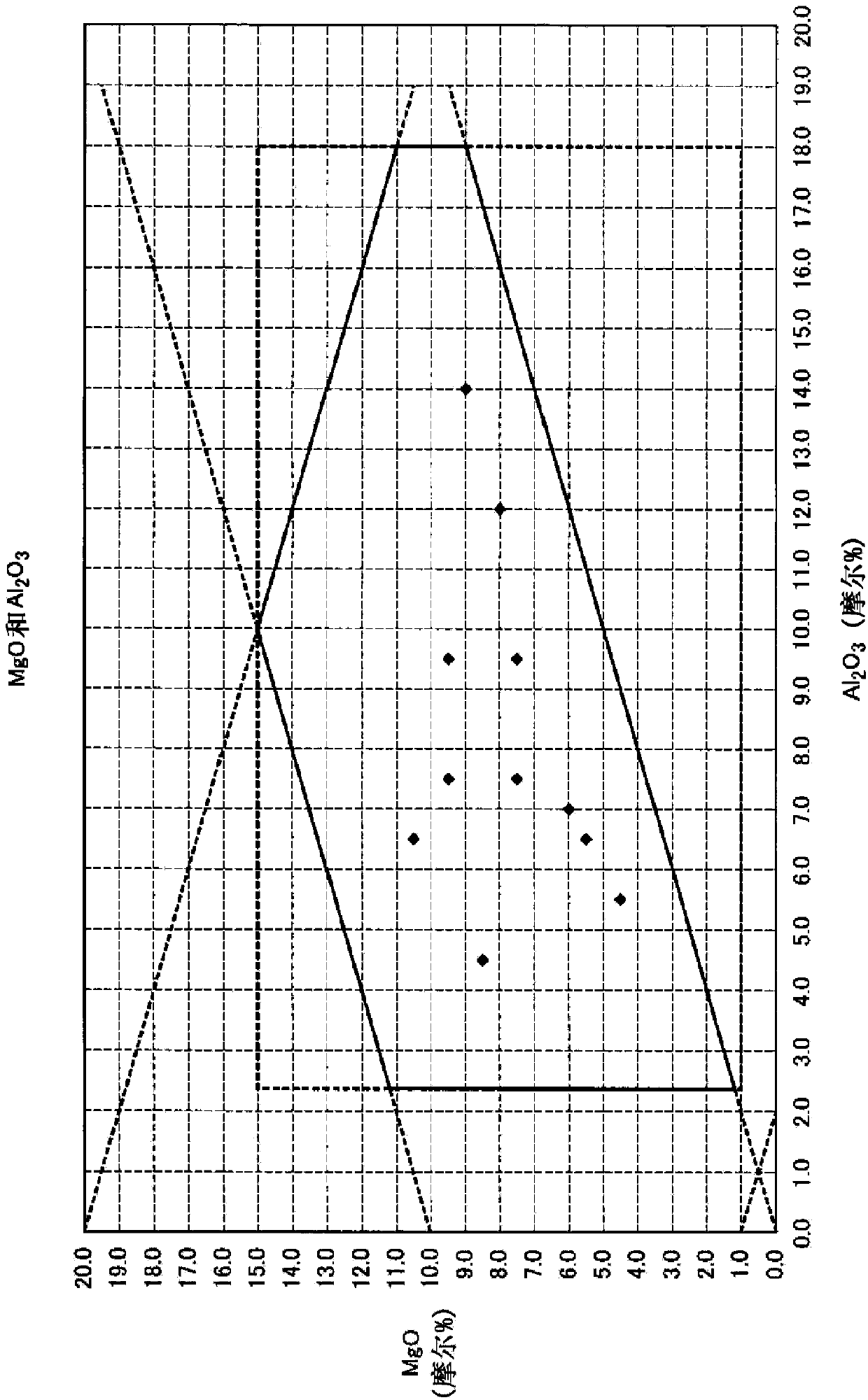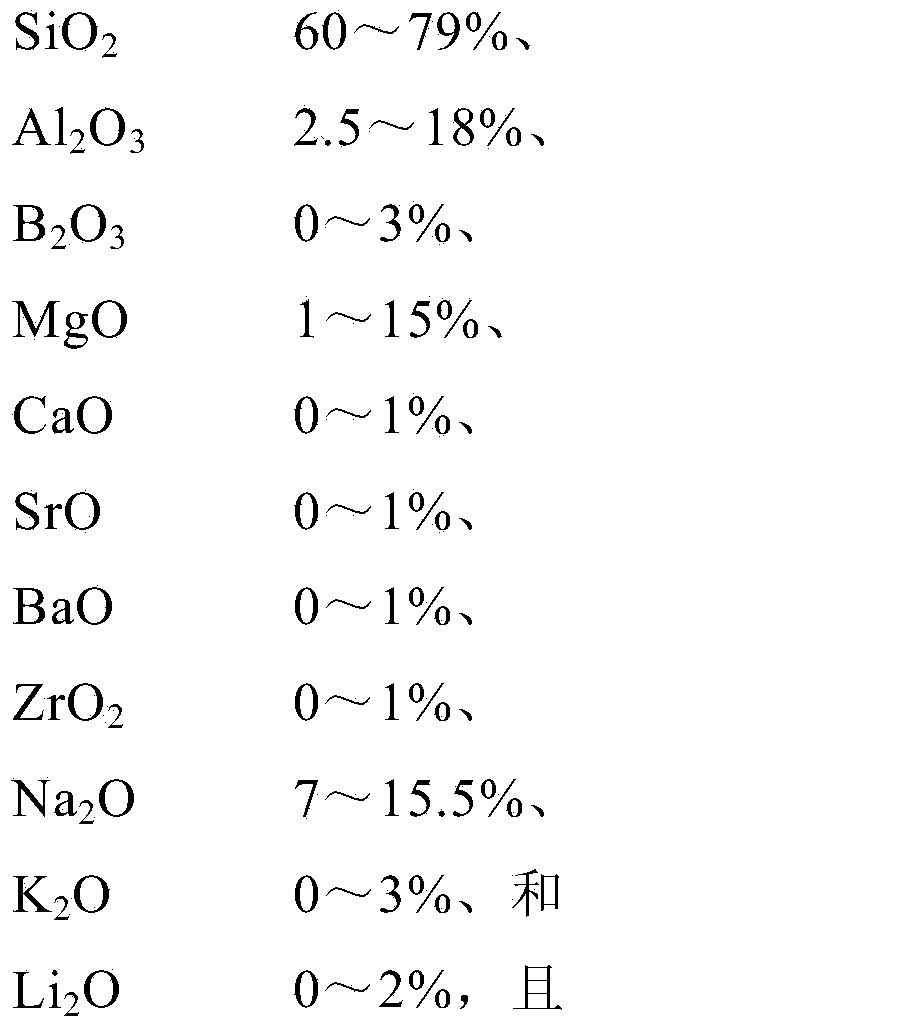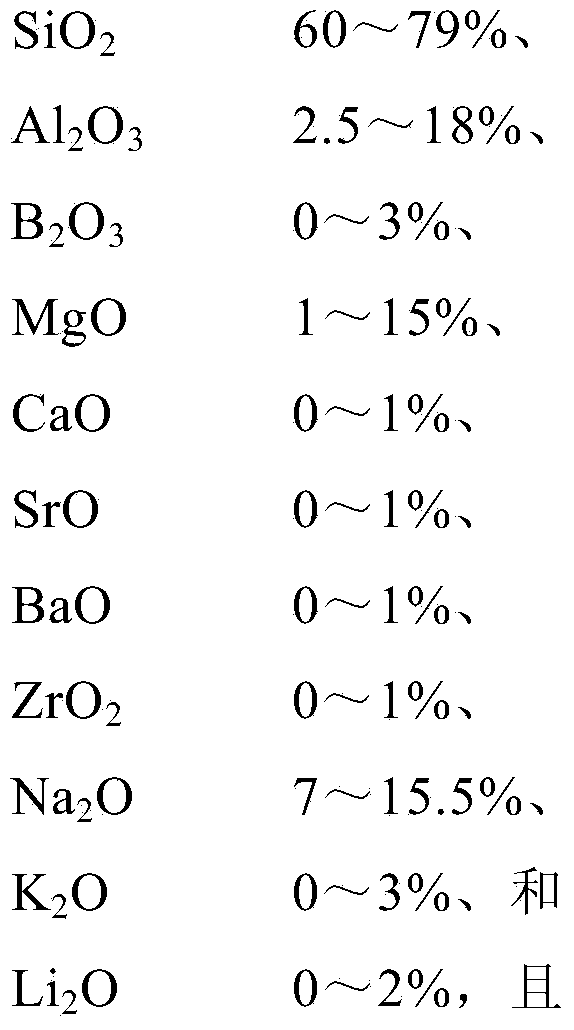Glass substrate and method for producing same
A technology for glass substrates and manufacturing methods, applied in optics, instruments, nonlinear optics, etc., can solve the problems of reduced thermal expansion coefficient and low content rate, and achieve the effects of low content rate, less volatilization, and excellent uniformity
- Summary
- Abstract
- Description
- Claims
- Application Information
AI Technical Summary
Problems solved by technology
Method used
Image
Examples
Embodiment Construction
[0142] Hereinafter, although an Example and a production example demonstrate this invention in more detail, this invention is not limited to these Examples and a production example.
[0143] Examples (Examples 1-13, 18-22) and comparative examples (Examples 14-17) of the glass substrate of this invention are shown. It should be noted that the brackets in the table are calculated values.
[0144] According to the composition shown in Tables 1 to 4, prepare the raw materials of each component for glass substrates, add SO 3 The sulfate was converted to 0.1 parts by mass and melted by heating at a temperature of 1600° C. for 3 hours using a platinum crucible. Upon melting, a platinum stir bar was inserted and stirred for 1 hour to homogenize the glass. Next, the molten glass is flowed out, cooled, ground into a plate shape, and polished.
PUM
| Property | Measurement | Unit |
|---|---|---|
| glass transition temperature | aaaaa | aaaaa |
| density | aaaaa | aaaaa |
| density | aaaaa | aaaaa |
Abstract
Description
Claims
Application Information
 Login to View More
Login to View More - R&D
- Intellectual Property
- Life Sciences
- Materials
- Tech Scout
- Unparalleled Data Quality
- Higher Quality Content
- 60% Fewer Hallucinations
Browse by: Latest US Patents, China's latest patents, Technical Efficacy Thesaurus, Application Domain, Technology Topic, Popular Technical Reports.
© 2025 PatSnap. All rights reserved.Legal|Privacy policy|Modern Slavery Act Transparency Statement|Sitemap|About US| Contact US: help@patsnap.com



